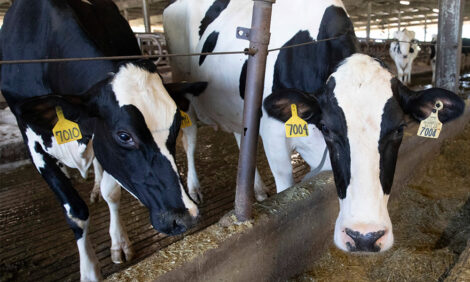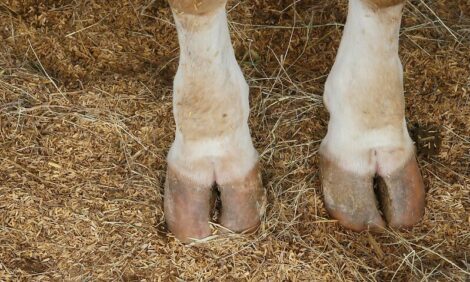



Bluetongue disease impacting Dutch dairy sector despite vaccine - USDA FAS
Infected cows rarely die, but suffer health and fertility issuesIn September 2023, bluetongue disease returned to the Netherlands after 14 years, according to a recent report from the USDA FAS. Spread throughinfected flying insects called biting midges (Culicoides spp.), the virus was identified as bluetongue virus serotype 3 (BTV-3). The disease causes illness in ruminants such as sheep, and cattle (but also goats and alpacas), and has an incubation time of 5-20 days. It cannot spread between animals, as the midge is the vector for the disease, nor does it pose any danger to humans.
At the end of 2023, 4,300 farms had been affected, of which 1,990 had sheep and 2,200 had cattle. An additional 1,579 locations reported signs of illness but had no official testing done.
In total 51,819 sheep died of the disease. For sheep, the symptoms of the virus are lethargy, lameness, damage in the mouth, swollen eyes, nose, or head and nasal discharge. The morbidity is high among sheep, with around 1,600 sheep dying per day. A questionnaire by the Dutch Sheep and Goat Breeders Organization, shows that after contracting this particular serotype of the disease 73.3% of infected sheep succumbed in September 2023.
Infected cows also suffer health and fertility issues, causing reduced milk production, but rarely die from the disease. The milk production was on average down by almost 1 kg per cow per day for 9 to 10 weeks (there were stark variations depending on the severity of the disease).
Vaccines became available at the end of April 2024, when the Dutch Ministry of Agriculture, Fisheries, Food Security and Nature (AFFN) authorized three brands of bluetongue vaccines for use in livestock. An estimated 90-95 percent of sheep were vaccinated by the end of June 2024.8 There are no clear figures on how many cattle have been vaccinated, but experts presume their vaccination rate is much lower than that of sheep. Apart from vaccines, the only other way to prevent the disease is by trying to lower the presence of midges , e.g., through known interventions such as ventilators or preventing the occurrence of standing water (in which eggs may hatch).
Additionally, lower temperatures in winter, slow the spread of midges, and can therefore slow the spread of the disease (temporarily). Nonetheless, a second outbreak occurred starting half of June 2024,10 increasing rapidly to a total of 3,807 cases by August 15, 2024.11 Most cases seem to occur in the east and south of the Netherlands (see Figure 1). An estimated 1,500 to 1,800 sheep are currently dying of the disease daily, and an estimated 40,000 are actively suffering from the disease. At this rate, the Dutch Sheep and Goat Breeders Organization estimates, 100,000 sheep could succumb to the disease by the end of 2024. There were 662,000 sheep in the Netherlands on December 1, 2023.
The virus is another hardship for sheep farmers, as over the past five years they also increasingly have been confronted with the reappearance of the wolf in the Netherlands. The wolfs attack grazing animals, such as sheep, whereby multiple animals are hunted and killed (but not necessarily all eaten13). Agricultural newspaper Boerderij reports that wolf attacks increased threefold from Q1 2023 to Q1 2024 (from 77 to 267 attacks). On August 14, the Dutch Organization for Sheep Farming has asked the Minister of AFFN for attention for the sector’s financial situation. The Minister has promised “to commission a study into the impact of Bluetongue disease on the financial situation in sheep farming”.
The rapid spread of the disease has also raised questions over the efficacy of the vaccines. The AFFN began research into the vaccine’s impact on July 12, 2024.16 Preliminary results indicate that the clinical symptoms of animals affected by the disease are milder than last year.17 However, no results have been shared on mortality rates yet.
Bluetongue Disease has also spread to the countries neighboring the Netherlands. There are reports from Belgium (677 cases, up from 82 cases two weeks ago18) and Germany (1885 cases19). Across those borders, there are reports from Luxembourg (39 cases20), France (6 cases21), and Denmark (6 cases22). Meanwhile, questions have been raised in the Dutch House of Representatives into the situation, specifically whether any additional management measures can be taken to mitigate the risk of spreading the disease.23 Without options to stop the spread limited, farmers hope that this winter will be colder that last year to eliminate the midges so that the virus will not return next spring.



